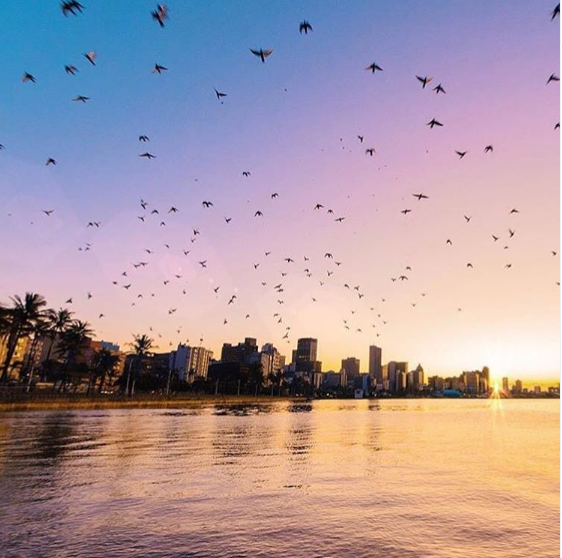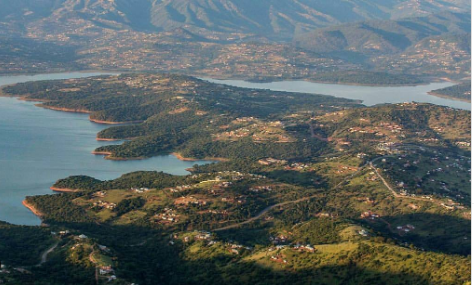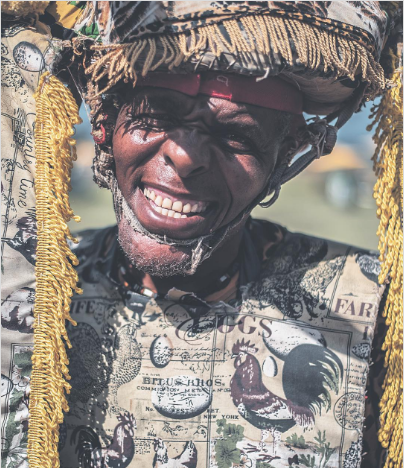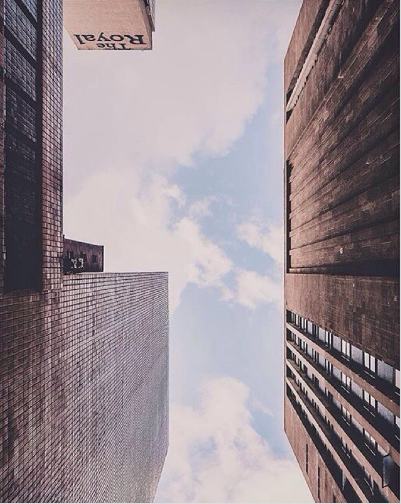
Exploring Durban City South Africa: A Comprehensive Guide
Durban, located on the eastern coast of South Africa in the KwaZulu-Natal province, is a vibrant and culturally diverse city with a rich history and a unique blend of urban and coastal elements. As the country’s third-largest city, Durban plays a pivotal role in South Africa’s economic landscape, boasting a bustling port that serves as a key hub for trade and commerce.
Durban’s cultural tapestry is woven with diversity, reflecting its history as a melting pot of various ethnicities and influences. The city’s residents proudly represent Zulu, Indian, British, and other heritage, contributing to a rich and varied culinary scene, vibrant festivals, and a dynamic arts and music community.
Duban Africa Historical background
Durban’s history is marked by a dynamic interplay of indigenous Zulu communities, European exploration, and subsequent British colonization. Established in 1835 as a British trading post named Port Natal, the town later adopted the name Durban in honor of Sir Benjamin D’Urban. The sugar industry and the arrival of Indian indentured laborers in the late 19th century contributed to the city’s cultural diversity. Durban’s strategic importance grew with the development of the railway to Johannesburg. The city experienced the impacts of apartheid but underwent positive changes post-apartheid, embracing diversity and initiating inclusive policies. Today, Durban is a thriving economic hub, driven by its busy port, manufacturing, and tourism sectors, reflecting a rich history of cultural exchange and development.
The Importance and significance of Durban in South Africa
Durban Geography and Climate
The city is renowned for its warm subtropical climate, making it a popular destination for beach enthusiasts. The Golden Mile, a stretch of sandy beaches along the Indian Ocean, is a focal point for recreational activities, water sports, and a vibrant beachfront culture.
Geography: Durban is located on the eastern coast of South Africa in the KwaZulu-Natal province. Its geographical features include:
- Coastline: Durban is known for its extensive coastline along the Indian Ocean, featuring sandy beaches and a prominent beachfront.
- Topography: The city is characterized by a mix of coastal plains and hilly terrain, with the inland areas gradually rising towards the west.
Climate: Durban has a subtropical climate, characterized by warm and humid weather throughout the year. Key aspects of its climate include:
- Temperature: The city experiences mild winters and hot, humid summers. Average temperatures range from 16°C (61°F) in winter to 26°C (79°F) in summer.
- Rainfall: Durban receives most of its rainfall during the summer months, typically between November and March. Winters are relatively dry.
- Humidity: The coastal location contributes to high humidity levels, especially during the summer season.
- Sunshine: Durban enjoys abundant sunshine, with an average of around 320 days of sunshine per year.
The combination of a warm climate, beautiful beaches, and a diverse topography makes Durban a popular destination for both tourists and residents seeking a relaxed coastal lifestyle.
The Historical Roots of Durbans’ Cultural Diversity
 Durban’s historical roots of cultural diversity are deeply embedded in the city’s development, shaped by a series of historical events and influences. The key factors contributing to Durban’s cultural diversity include:
Durban’s historical roots of cultural diversity are deeply embedded in the city’s development, shaped by a series of historical events and influences. The key factors contributing to Durban’s cultural diversity include:
-
Zulu Heritage:
-
Before European colonization, the region was inhabited by indigenous Zulu communities. The Zulu people played a foundational role in shaping Durban’s cultural identity.
-
-
European Colonization:
- With the arrival of European settlers, including the British in the 19th century, Durban became a focal point for colonial activities. This period marked the beginning of cultural interactions between indigenous populations and European colonizers.
-
Indian Immigration:
- The late 19th century saw the arrival of a significant number of Indian laborers who were brought to Durban to work on sugar cane plantations. This immigration wave contributed significantly to the city’s cultural mosaic.
-
Apartheid Era:
- The apartheid era, which lasted from 1948 to the early 1990s, enforced segregation and racial discrimination. However, it also inadvertently contributed to a cultural tapestry as diverse communities resisted and navigated these challenges together.
-
Cultural Exchange and Fusion:
- Over the years, Durban became a melting pot of cultures, with Zulu traditions, Indian influences, and European elements blending to create a unique and vibrant cultural landscape. This fusion is evident in various aspects of daily life, including cuisine, language, and customs.
-
End of Apartheid and Embracing Diversity:
- The end of apartheid marked a significant turning point. South Africa’s transition to democracy encouraged the celebration of cultural diversity, and Durban embraced this change by fostering inclusivity and acknowledging the contributions of various communities.
-
Cultural Events and Festivals:
- Durban hosts numerous cultural events and festivals that showcase the diversity of its residents. These celebrations provide platforms for different communities to share their traditions, fostering understanding and appreciation.
Durban’s historical roots of cultural diversity are deeply intertwined with the interactions between indigenous communities, European settlers, and later waves of immigrants. The city’s cultural richness is a testament to its ability to absorb, adapt, and celebrate the diverse influences that have shaped its identity over the years.
Durban Architectural Heritage
 Durban boasts a rich architectural heritage that reflects its historical and cultural evolution. The cityscape combines modern skyscrapers with historical landmarks, showcasing a fascinating architectural juxtaposition.
Durban boasts a rich architectural heritage that reflects its historical and cultural evolution. The cityscape combines modern skyscrapers with historical landmarks, showcasing a fascinating architectural juxtaposition.
Some notable architectural landmarks in the city include:
-
City Hall:
- Completed in 1910, Durban’s City Hall is an iconic Edwardian building with striking colonial architecture. It features a prominent clock tower and serves as a symbol of the city’s historical significance.
-
Old Court House Museum:
- The Durban Old Court House museum is housed in one of Durban’s oldest buildings, dating back to the 1860s. The architecture is a blend of Victorian and Edwardian styles, offering a glimpse into Durban’s legal history.
-
Emmanuel Cathedral:
- Completed in 1904, Emmanuel Cathedral is a prominent example of Gothic Revival architecture. Its spire and intricate detailing make it a standout landmark in the city.
-
Moses Mabhida Stadium:
- While modern, the Moses Mabhidha stadium‘s design is architecturally striking. The arch, in particular, is a notable feature, and visitors can take the SkyCar to the top for panoramic views of Durban.
-
The Playhouse Theatre:
- Originally constructed as a municipal hall in 1928, the Playhouse Theatre is a magnificent example of Edwardian Neo-Baroque architecture. It has undergone renovations and is a key venue for cultural performances.
-
Florida Road Architecture:
- Florida Road Arxhitecture, a popular entertainment and dining street, features a mix of architectural styles, including Victorian, Edwardian, and Art Deco. The street reflects Durban’s historical urban development.
-
Phansi Museum:
- Housed in a colonial-style building, the Phansi Museum showcases traditional South African art and crafts. The architecture complements the cultural exhibits within.
-
St. Thomas’ Church:
- Dating back to the late 1800s, St. Thomas’ Church is a fine example of Victorian Gothic architecture. The church has beautiful stained glass windows and a historic graveyard.
-
Durban Jewish Museum:
- Located in a synagogue building dating back to 1910, the Durban Jewish Museum features an architectural style that is characteristic of early 20th-century synagogues.
-
KwaMuhle Museum:
- The building that houses the KwaMuhle Museum is a striking example of Art Deco architecture. Originally a municipal building, it now serves as a museum documenting the history of apartheid in Durban.
-
Grey Street Mosque:
- This mosque, with its distinctive domes and minarets, is a prominent feature in Durban’s architectural landscape. It is one of the oldest mosques in the city, reflecting Islamic architectural influences.
Durban’s architectural heritage encompasses a diverse range of styles, from colonial and Victorian to modern designs. These structures contribute to the city’s character and tell the story of its historical and cultural development.
Popular Tourist Destinations in Durban South Africa
Durban, South Africa, offers a variety of popular tourist destinations that showcase the city’s cultural diversity, natural beauty, and historical significance. Some notable attractions include:
-
Golden Mile:
- A renowned stretch of sandy beaches along the Indian Ocean, the Golden Mile is a hub of recreational activities, seaside promenades, and vibrant beachfront culture.
-
uShaka Marine World:
- A world-class marine theme park, uShaka Marine World features an aquarium, water park, and interactive marine exhibits. It’s a family-friendly destination offering entertainment and education.
-
Moses Mabhida Stadium:
- An iconic landmark, the Moses Mabhida stadium hosted matches during the 2010 FIFA World Cup. Visitors can take a SkyCar to the top for panoramic views of the city or experience the thrill of the Big Swing.
-
Durban Botanic Gardens:
- Established in 1849, these Durban botanical gardens are Africa’s oldest. The lush and well-maintained gardens offer a peaceful retreat with a variety of plant species.
-
Durban Beachfront:
- Besides the Golden Mile, the Durban Beachfront area encompasses various attractions, including Suncoast Casino and Entertainment World, offering gaming, dining, and entertainment.
-
Victoria Street Market:
- A vibrant market showcasing the city’s Indian influences, Victoria Street Market is a hub for spices, textiles, and traditional crafts. It’s a great place to experience Durban’s multicultural atmosphere.
-
Durban City Hall:
- A historic landmark with stunning architecture, the Durban City Hall is a symbol of Durban’s colonial past. It houses the Natural Science Museum and is located in the heart of the city.
-
Umgeni River Bird Park:
- A haven for bird enthusiasts, this park is home to a diverse range of bird species. Visitors can enjoy bird shows and educational presentations.
-
KwaMuhle Museum:
- This museum provides insights into the history of apartheid in Durban. Exhibits and multimedia presentations shed light on the city’s role during this challenging period.
-
Durban Cultural and Documentation Centre:
- Showcasing the city’s rich cultural heritage, this center features exhibitions, workshops, and performances that highlight the diverse communities that contribute to Durban’s identity.
-
Mini Town:
- A miniature replica of Durban’s cityscape, Mini Town offers a unique perspective on the city’s architecture and landmarks.
-
Japanese Gardens:
- Located in the suburb of Durban North, these tranquil gardens provide a serene escape with lush vegetation, ponds, and Japanese-themed landscapes.
These attractions collectively offer a well-rounded experience for tourists, combining natural beauty, cultural richness, and historical significance in the vibrant city of Durban.
Durbans Transport Infrastructure

Durban’s transportation infrastructure is well-developed, catering to the needs of both residents and visitors. The city’s strategic location as a major port and economic hub has influenced the establishment of a comprehensive and efficient transportation network. Key components of Durban’s transportation infrastructure include:
-
Road Network:
- Durban has an extensive road network that includes well-maintained highways, city streets, and suburban roads. The N2 highway connects Durban with other major cities in South Africa, facilitating the movement of goods and people.
-
Public Transportation:
- Bus Services: Durban has a public bus system operated by the eThekwini Municipality called Durban Transport. Additionally, the People Mover bus service provides convenient and affordable transportation within the city center.
- Mini-bus Taxis: Mini-bus taxis are a popular mode of public transportation, offering flexibility in routes and accessibility to various parts of the city.
-
Rail Transport:
- The city is served by Metrorail, providing commuter rail services. The railway network connects Durban with suburban areas and extends to other cities in the region.
-
Durban Harbour:
- The Port of Durban is one of the busiest and largest ports in Africa, playing a crucial role in facilitating international trade. The harbor is equipped to handle various types of cargo and supports the city’s economic activities.
-
King Shaka International Airport:
- Located about 35 kilometers north of the city, King Shaka International Airport serves as Durban’s main airport. It provides domestic and international flights, connecting the city to global destinations.
-
Durban People Mover:
- The Durban People Mover is a bus rapid transit (BRT) system that operates in the central business district. It offers a convenient and efficient way for residents and tourists to navigate the city center.
-
Uber and Taxis:
- Ride-sharing services like Uber operate in Durban, providing an additional transportation option. Traditional metered taxis are also available throughout the city.
-
Pedestrian Infrastructure:
- Durban has pedestrian-friendly areas, especially in the city center and along the beachfront. Sidewalks, pedestrian crossings, and promenades contribute to a walkable urban environment.
-
Cycling Infrastructure:
- The city has been working to improve cycling infrastructure with dedicated bike lanes and bike-sharing programs, promoting eco-friendly transportation alternatives.
-
Future Developments:
- Ongoing and planned developments, including improvements to road networks and public transportation, continue to enhance Durban’s transportation infrastructure for future sustainability and efficiency.
Overall, Durban’s transportation infrastructure is diverse and evolving, providing residents and visitors with a range of options for commuting within the city and connecting to regional and international destinations.
Conclusion
In conclusion, Durban stands as a city of remarkable diversity, historical richness, and economic significance on the eastern coast of South Africa. From its roots as a British trading post to its present-day status as a bustling economic hub, Durban’s journey has been shaped by a unique blend of cultures, architectural marvels, and a strategic geographic position.
The city’s cultural diversity, stemming from indigenous Zulu roots, European colonization, and waves of immigration, has given rise to a vibrant tapestry of traditions, culinary delights, and artistic expressions. Durban’s architectural heritage, ranging from colonial landmarks to modern structures, narrates a captivating story of its evolution over time.
Economically, Durban’s role as home to the Port of Durban, one of Africa’s busiest, underscores its pivotal position in international trade. The city’s economic activities, spanning manufacturing, commerce, and tourism, contribute significantly to South Africa’s economic landscape.
Durban’s transportation infrastructure, including a well-connected road network, public transportation options, and a thriving port, further solidifies its standing as a key transportation and logistics hub.
As residents and visitors alike stroll along the Golden Mile, explore historical landmarks like City Hall, or enjoy the festivities of Victoria Street Market, they are immersed in the dynamic spirit of Durban. The city’s commitment to inclusivity, as evidenced by its cultural events and community initiatives, reflects a forward-thinking approach that embraces diversity.
Encouraging further exploration and understanding of Durban City is an invitation to delve deeper into its multifaceted identity. Whether it’s the sun-soaked beaches, the vibrant cultural celebrations, or the harmonious coexistence of traditions, Durban offers a unique experience that deserves exploration. It is a city that encapsulates the essence of South Africa’s past, present, and future—a destination where history, culture, and economic vitality converge, creating an enduring tapestry waiting to be explored and celebrated.
